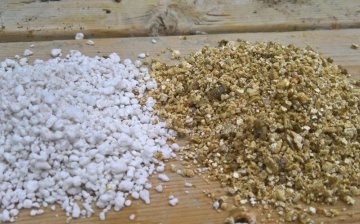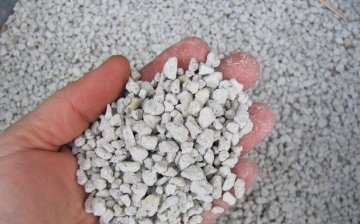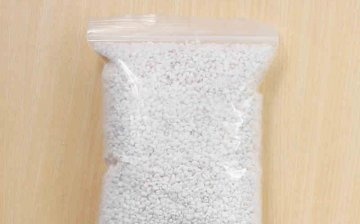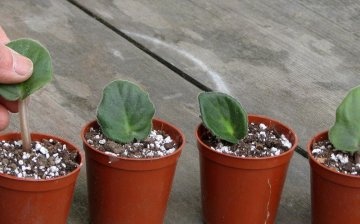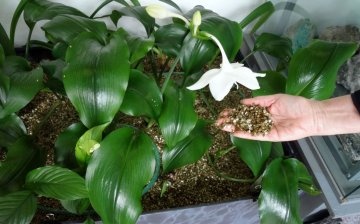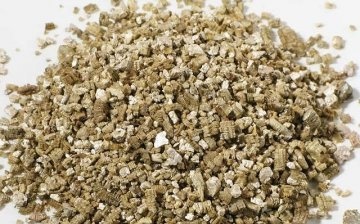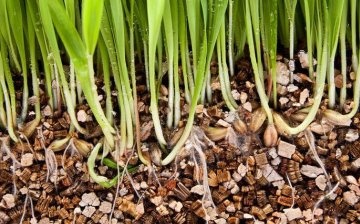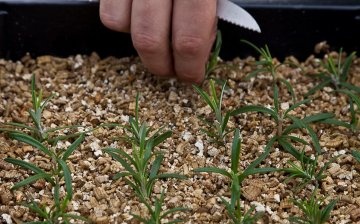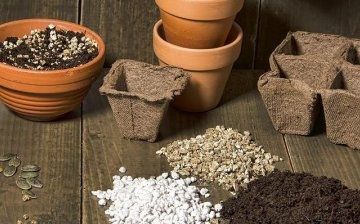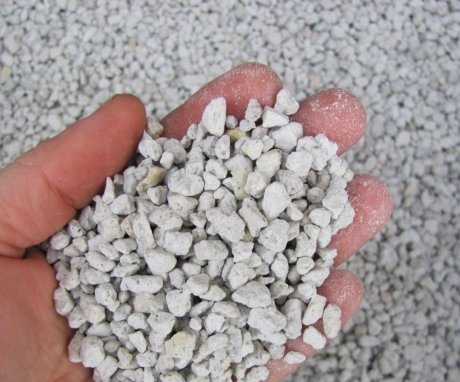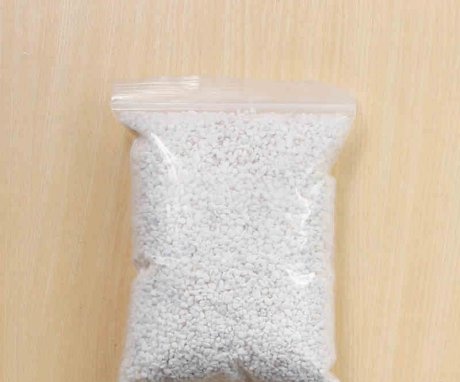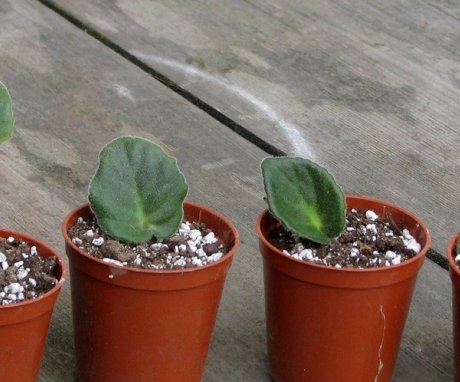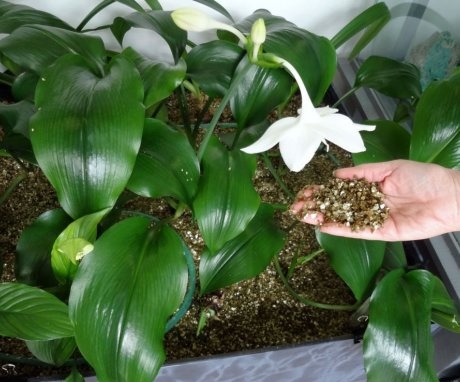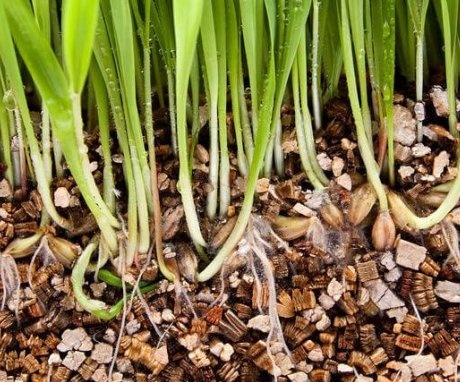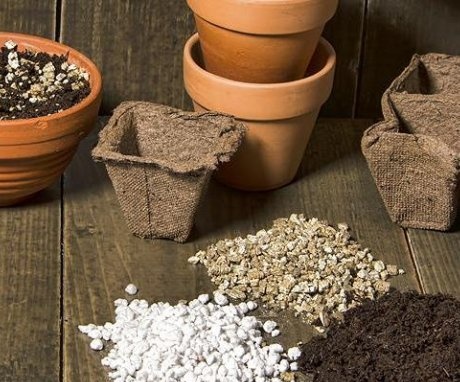Perlite and vermiculite: what is the difference and which is better for plants?
People who are engaged in the cultivation of indoor flowers have been familiar with these additives to the soil for a long time. But for beginners who are only fond of gardening, for the first time they come across these names.
In most cases, many people don't understand the differences between supplements. In order to use the substances correctly, it is recommended that you familiarize yourself with each separately, as well as find out why this or that drug is used in gardening. And most importantly, what are the differences between the substances and which one is better.
Content:
- Perlite - what is it?
- What is it used for in gardening?
- Perlite for seedlings
- Perlite for indoor flowers
- Vermiculite - what is this mineral?
- Why do plants need it?
- How to use it correctly?
- Perlite and vermiculite - what's the difference?
Perlite - what is it?
Perlite is a mineral, a rock that lies in the layers that make up the volcano. This substance is formed in a specific way by the contact of several natural forces. Initially, during a volcanic eruption, lava comes into contact with the earth's surface. The solidified hot substance is called obsidian. If this substance comes into contact with groundwater, a hydroxide called perlite is formed.
When formed, the substance has a different color coloration from brown, black and up to green. In order to obtain the perlite that can be used, the substance undergoes special processing. The volcanic rock is subjected to a grinding procedure. Then it is heated to 11000C. The mass begins to swell, water that is absorbed in contact with underground moisture is released from it. Perlite acquires a spherical shape, and the bulk density of the resulting material undergoes a change, decreasing several times.
Through this processing, perlite is a ball, white, closed shape, does not absorb nutrient moisture.
The peculiarity of the substance lies in the following characteristics:
- The expanded material retains nutrient moisture in the structural capillaries.
- The substance shows excellent resistance to fire.
- Has an increased ability to absorb any sound and retain heat.
- Its density is 50-250 kg / m3.
- Not susceptible to the effects of natural forces and external factors.
- Its processing and receipt is not difficult, so its cost remains at an affordable level.
The use of perlite is possible in various industries. This is how the material replaces sand in construction. This substitution provided the weight of the structures being built. It is used at all stages of construction work. Perlite is also successfully used in agriculture, metallurgy and textile production.
What is it used for in gardening?
Perlite is widely and effectively used in horticulture. It can completely replace the sand introduced into soil substrates, when planting various plants.This is due to the fact that perlite and sand have an identical base, which is represented by silicon oxide. When replacing sand with perlite, the soil acquires the necessary porosity and excellent air permeability, which is so necessary for the root system of any indoor plant or seedling placed in an open area. A nutritional supplement is especially important for weakened rhizomes or cuttings planted for rooting.
In addition, perlite helps to lighten heavy soils, while reducing them acidity... This is due to the fact that the substance has a slightly alkaline reaction, which makes it possible to neutralize the increased acidity of the original soil. This property of the substance is used for planting in open areas with high acidity of plants, such as azalea or gardenia.
Also, the material is needed for planting plants in clay soil. In the form of drainage, the substance is able to draw out the soil unnecessary for the plant from the soil, preventing the rhizomes from rotting. The main feature of perlite is that the material is neither moisture-consuming nor chemically inert.
It is used only as a soil looser and oxygen supply to the roots.
If you use perlite in open areas, then it is not only buried in a hole during planting, but also scattered over the newly dug area. Such measures help to neutralize the formation of a crust on the surface in the summer heat.
But not every perlite is recommended to be taken. The material used for the construction of buildings is not suitable for use in agriculture. Therefore, for planting plants, coarse-grained material should be purchased as drainage. But it is quite problematic to purchase it in ordinary stores, it is recommended to apply for the necessary material in specialized nurseries or flower centers.
Perlite for seedlings
Perlite is great for planting seedlings. It promotes the rapid germination of seedlings due to the availability of air and the absence of excessive moisture in the soil substrate. When planting cuttings or seed material, the soil is diluted with perlite and soil mixture in a ratio of 4 to 1.
Growing cuttings without root system possibly in pure perlite. But most often, for the fastest possible obtaining of planting material with strong rhizomes, it is recommended to supplement the substance with dry peat or sphagnum moss... For more efficient germination of seed material or if the seeds are very small and cannot be planted in such a way that they are evenly distributed over the entire surface without crowding in one place, it is recommended to use perlite.
The mineral is mixed with seedlings and spread evenly over the prepared surface. Additionally, it is not recommended to sprinkle with soil:
- Firstly, perlite will cover the seedlings on its own, while protecting against hypothermia or excessive heat, maintaining the required temperature.
- Secondly, many seeds are not able to hatch to the surface when deeply buried.
In addition, growing plants in perlite reduces the possibility of fungal diseases in both seedlings and cuttings planted for rooting. Perlite is characterized by increased dust.
The smallest particles are very volatile and when a person inhales oxygen, they can enter the upper respiratory tract, moving from the air to the lungs and bronchi.
The disadvantage of perlite in this situation is that once it gets into the lungs of a person, microparticles will forever remain inside the body. To prevent the substance from dusting, it is recommended to slightly spray it with water from a spray bottle. Slight exposure to nutrient moisture does not alter the endowed properties of the mineral.
Perlite for indoor flowers
How you can use the mineral for indoor plants:
- For indoor plants, perlite is used as drainage. It is lined before placing the soil mixture in a prepared pot, on the bottom with a layer of 3-6 cm. An additional layer will allow the introduced nutrient moisture to not stagnate and helps to eliminate root rot as a result of fungal diseases formed with high soil moisture. Another feature of the substance is its ability to absorb mineral fertilizers... If an excessive amount of nutrients has been introduced into an indoor flower, which can negatively affect the root system of the flower and its entire condition, the mineral is able to absorb the excess and, if necessary, give it back to the ground. This possibility of the substance increases its importance when growing indoor plants.
- Additionally, you can use perlite as a specific irrigation. To do this, the purchased minerals are poured into a small basin or a low pallet in one layer, water is poured on top, and a flower is placed next to it. Thus, perlite irrigated with water, gradually evaporating it, releases the smallest particles into the air, which settle on the leaves of the plant, thereby carrying out the required hydration of the plants. This watering is especially important for tropical shrubs planted in pots and grown at home.
- Also, the substance can be used as a mulch for indoor plants. Adding the mineral to the flowerpots will eliminate persistent crust formation after watering and reduce the frequency of loosening.
Vermiculite - what is this mineral?
Vermiculite is a mineral, practically sterile material of an environmentally friendly nature. The product does not contain foreign toxic substances or heavy slags. It belongs to the group of hydromica. A distinctive feature of vermiculite is its neutrality to decomposition, decay or external factors that force the material to undergo changes. The mineral is also not subject to the influence of various rodents or insects.
The processing of the obtained natural material is carried out at concentration plants, where the selection of pure dressing ore and material combined with another rock is made. Pure mica is sent for processing for use in the electrical industry. And the remaining materials are exposed to 14,000 Fahrenheit, in which the substance is subject to swelling and, through the high temperature, takes on an oblong appearance. Subsequently, the granules are subject to processing and grinding to a certain size.
The resulting material is a porous, free-flowing substance with irregularly shaped scales.
The material is able to absorb nutrient moisture, thereby being saturated in such a volume that it exceeds its original size by 5 times. Centers of activity are formed on the surface of the mineral, and the internal composition is used as a catalyst for chemical processes.
After processing, the material becomes a different color. This is due to the fact that when exposed to high temperatures, contact with other rocks taken during the extraction of vermiculite from the deposit occurs. The use of vermiculite, as well as perlite, is necessary in construction for thermal insulation, lightening the weight of erected buildings and for catalysis processes. In most cases, vermiculite is used in agriculture (1/3 of the total volume), as well as in medicine, electrochemistry and metallurgy.
Why do plants need it?
Vermiculite is endowed with a large number of properties that have a beneficial effect on the cultivation of indoor plants:
- First of all, the mineral is endowed with a complex chemical content. The substance contains a large number of trace elements such as silicon, magnesium, calcium, aluminum and iron.But the disadvantage of the drug is the fact that all these substances are not available for indoor plants.
- But do not put vermiculite in the far corner. It has the ability, when a substance is placed in a soil substrate, on its surface it binds various particles of mineral substances together with the components present in the soil. This is how ammonium, potassium or magnesium ions are formed. This possibility ensures the absorption of nutritious feedings and their further periodic release, if necessary.
- In addition, vermiculite, like perlite, has a neutral pH environment. Therefore, when a substance is placed in a soil with high acidity, the soil becomes less acidic. If plants planted in a soil substrate with vermiculite require acidic soil, then it is necessary to additionally add a few drops of vinegar essence to the soil, slightly acidifying the soil. Otherwise, the growth of the plant will stop completely, development will stop. The shrub will sit in one place, not releasing new leaf plates or inflorescences.
- The main distinguishing feature of vermiculite is the fact that the mineral is able to absorb water several times its own volume. This is quite convenient when you need to add nutritious moisture to the house plants and leave the pet for an extended period. Vermiculite will gradually release moisture, saturating the soil substrate and root system with the necessary moisture.
Therefore, vermiculite is not less than perlite recommended for use as a supplement for indoor plants. The mineral has a positive effect on the development of shrubs in home living conditions, contributing to excellent air conductivity to the roots, as well as by saturating moisture and retaining it for a long time.
How to use it correctly?
Vermiculite, like perlite, has increased dustiness. Tracking is not allowed for its use. Therefore, it is very important, when purchasing a substance, to control that there is no caking during its transportation. Otherwise, it will be either practically impossible or problematic to use it in gardening.
Before use, be sure to rinse the substance in a small amount of water. This is necessary in order to remove the dust and start working with it. When interacting with the mineral, it is recommended to use protective goggles and a gauze bandage. Even though the drug should be exposed to water, it can cause an allergic reaction.
When using vermiculite, the following rules and dosages are distinguished:
- When germinating seed material, the seeds are mixed with vermiculite, previously well moistened, placed in a plastic bag and left for the period of germination in a warm, bright room. After the seeds have germinated, they are carefully removed and rooted in the soil substrate, which consists of soil (2 parts) and processed mineral (1 part).
- When planting in open ground - before placing seedlings, it is recommended to scatter vermiculite in 1 tbsp. for every 10 cm. In the case of planting seedlings obtained earlier in greenhouse conditions, 3-4 tablespoons are introduced into the hole during planting for rapid rooting. substances.
- Vermiculite has a positive effect on the soil and plants planted in it, if an additive is made from compost (bird droppings, bedding manure or peat) with the addition of a nutrient. For such a procedure, at least 2-4 buckets of vermiculite should be added to 1 quintal.
- For germination of cuttings, the soil mixture in such a situation should be 50% filled with the nutrient mineral. In such conditions, the root system is formed faster in seedlings.
Thus, vermiculite has a positive effect not only on the cultivation of indoor plants, being used as drainage and additional application as a water absorber, but also for growing seeds and obtaining a root system for cuttings.
Perlite and vermiculite - what's the difference?
Having qualitatively considered the description of each of the nutrient components suitable for growing indoor flowers, one can conclude that both minerals are interchangeable. They have many similarities, but at the same time they have significant differences.
Identical properties of minerals:
- Both drugs are biologically stable - they are not subject to decomposition, decay, damage by harmful parasites and insects.
- When any of the components are added to the soil, any pests in the soil are neutralized.
- Due to the structure, they contribute to the carrying out of the nutrient oxygen required by the roots. They are necessary to eliminate the formed crust on the surface and easier penetration of moisture to the root system.
- They are able to absorb moisture - perlite in a smaller volume, vermiculite is 5 times its own size, thereby allowing additional liquid to be retained in the soil.
- They are biologically pure minerals, non-toxic and free of slag deposits.
- They act on acidic soil, bringing it to neutral acidity.
- They block the root system, protecting it from exposure to high temperatures or, conversely, freezing.
Their differences are that, first of all, perlite is white, and vermiculite is brown. The latter contains a large number of nutrients, while perlite contains none. The positive advantage of vermiculite is that the latter can combine various compounds that have a positive effect on the plant as a whole. In this case, the processes produced do not occur simultaneously at a single moment, but gradually.
Moisture is retained in both minerals, but perlite gives up all the nutrient fluid at once, without having the peculiarity of retaining it. While vermiculite gradually releases nutrient moisture.
Each of the minerals is a substance that has a beneficial effect on the soil and the plant as a whole.
Therefore, it is quite difficult to determine what is best for indoor flowers. For one plant, perlite is an ideal ecological additive, while for another, vermiculite is required. Thus, both vermiculite and perlite are essential for indoor plants and open field seedlings. The main thing is that you can use them simultaneously, due to the fact that each of the minerals can not only replace the other, but also supplement.
More information can be found in the video:



